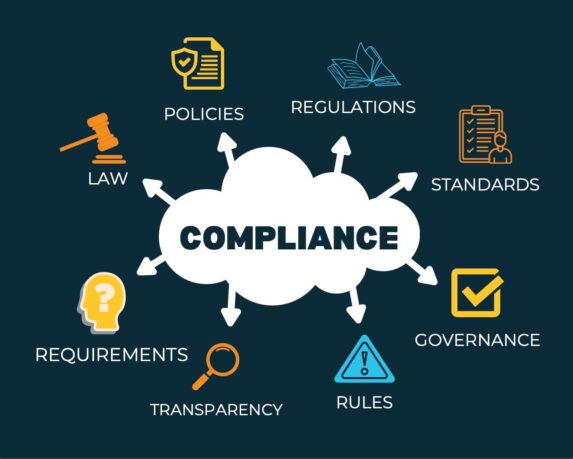Leveraging eSource for Remote Monitoring: A CRO Clinical Team Manager’s Perspective–Q&A

We talked to Takoda Rolland, a Clinical Team Manager (CTM) from a Contract Research Organization (CRO), to learn about their experience implementing CRIO for remote monitoring on a large, global clinical trial.
Question: How did you start using CRIO for remote monitoring as a CRO?
I have long been a proponent of the potential of eSource and its advantages in clinical trials. My experience as a Clinical Research Associate (CRA) enabled me to see that clinical research was only just scratching the surface on leveraging eSource to fundamentally change the way we monitor clinical trials. Initially, I did not expect to find myself in a position to make a meaningful shift towards remote monitoring. Several years ago, while working as a Clinical Team Manager (CTM) on Phase III Global Pivotal IND NASH (Non-alcoholic steatohepatitis) study, COVID forced CROs to rethink their monitoring paradigm. Drawing from both my own and my team’s experience with CRIO, our study was able to successfully implement a remote monitoring process to mitigate the issues of running a clinical trial during a pandemic.
Everything changed when COVID shut down onsite monitoring. Remote monitoring was no longer just an idea or small add-on, it was something we needed immediately and should have started implementing years ago. Flights were getting canceled, CROs grounded CRAs, and sites decided the last people they wanted to see were CRAs who had traveled through three major airports that week. As soon as the impact of COVID became evident, I started working with our study team and sponsor towards potential solutions. Reaching out to our study sites, we identified several sites using eSource and most frequently CRIO. CRIO provides a full eSource suite for clinical research sites including, CTMS, payments, patient recruiting, eRegulatory and more. Sites that had standardized on CRIO were able to continue recruiting patients and running trials with minimal to no interruptions. This was not the case for sites that had not made the switch to eSource.
Our team pulled in resources from data management, the sponsor, sites, and our clinical team to amend our study monitoring plan to allow for remote monitoring visits resulting in improved monitoring metrics across the board.
Question: What was your experience with sites using eSource before implementing CRIO for remote monitoring?
As a CRA, I was fortunate to come across several research sites that were early adopters of eSource, most commonly CRIO. The benefits of eSource were immediately evident for sites. Switching to eSource dramatically reduced the workload for sites by streamlining their entire process. The improved efficiencies in data entry vs handwritten notes, along with a clear step-by-step process for each specific visit, reduced patient visit times. Sites leveraging eSource also had a significant reduction in errors and missed procedures thanks to real-time data validation. When I did find errors, the audit logs and queries directly on the eSource page were considerably easier to close than the traditional pile of sticky notes monitors are accustomed to utilizing.
Question: How does using CRIO impact the efficiency of your team?
While other study teams were at the mercy of COVID restrictions, our team achieved some of our highest metrics. Our company’s expectation is around the industry average for DOS (days on site), requiring CRAs to do in-person onsite monitoring at a research site 8 – 10 days per month. Virtually every study struggled to have CRAs meet their DOS metrics as sites were closed. Even once sites reopened to allow CRAs, the back log from other studies caused a ton of intra-study competition for space on site for monitors. Many research sites had additional staffing issues related to cutbacks from COVID that further exacerbated the issue of getting monitoring time on site. With the implementation of remote monitoring, our CRAs exceeded their traditional DOS metrics resulting in more pages monitored, improved patient safety due to the reduction of monitoring lag times, and improved CRA efficiency in no longer losing valuable time to travel.
Question: How did the implementation of CRIO impact data quality?
Our monitors gained quicker access to study data without the restriction of planning on-site visits. Early access to data meant errors were captured promptly and corrective action implemented faster. With corrective actions in place, our sites participating in the remote monitoring saw fewer overall errors.
One of the issues I see in studies not using CRIO is the lack of standardization in site source. Too much time is spent as a CRA familiarizing yourself with each site’s specific source. Due to every site creating their unique source, it is not uncommon for critical data points to go un-captured at the beginning of a study. Standardization of the initial source reduces the workload of both sites and CRAs while ensuring critical data points are not missed – this increases the likelihood of noticing trends across sites. With eSource tools like CRIO, standardization is more easily managed with protocol amendments and clearer version control.
Question: How have your sites benefited from this change?
I have seen firsthand sites leverage eSource in several surprising ways. Some sites indicated that using eSource allowed them to work with even more doctors and in different therapeutic areas. With the ability for PIs and Sub-Is to review patients’ charts as eSource from their private practices or homes, the burden on doctors is greatly reduced. PI and Sub-I review times of adverse events are reduced since they no longer need to physically travel to the research office to review charts. One site I encountered even outsourced EDC entry of their source to an offsite facility in a different state.
Sites with eSource can accommodate many monitors with much shorter notice since they do not need to plan for physical space for the monitors. Monitors on site are more disruptive to a study coordinator who likely has patients to see. With eSource queries, study coordinators were willing and able to accommodate last minute visits and address study findings without the visit disrupting their schedules.
Question: How were study timelines impacted?
Study timelines were much more easily managed for our sites participating in remote monitoring. Last minute visits were no trouble to schedule for our sites enrolling their 1st patient, allowing our study team to meet our monitoring plan requirement of monitoring the 1st patient within 2 weeks of enrollment. Data management batch cleaning for database locks were also easy to schedule and hit for our team with remote monitoring due to reduced friction in scheduling. Medical review timelines were met with remote monitoring access to data, cutting out the middleman from PI to Medical Monitor by allowing for direct source access.
Question: How did CRAs on the study team feel about the change?
Our study team was more efficient when monitoring with multiple screens from the comfort of their home office as opposed to being crammed in a makeshift monitoring room. This change in the monitoring workflow resulted in improved monitor retention as many studies had monitors leaving the clinical trials industry completely. Even from our less tech savvy monitors, the feedback was unanimous:
Remote monitoring was their preference due to lifestyle comfort, efficiency in monitoring, and ease of scheduling.
Our monitors were happy to up their DOS from their 8 – 10 expected to as high as 12 – 16 when it meant not having to fight long hours at airports away from their families. Our study was so successful due to our implementation of remote monitoring, that our study alone accounted for over 25% of our company’s 3rd quarter revenue for that year.
Question: How does CRIO support risk-based monitoring?
Specific visits – like enrollment – and pages, like adverse events, can be prioritized study wide for monitors.
Continuous monitoring breaks the traditional monitoring cycle. Trip reports are based on the frequency monitors can get onsite and are not always an accurate representation of the amount of work being performed at a given site. Continuous monitoring allows for regular reporting for individual sites to be run and written at scheduled intervals to improve their value. Regular reporting across all sites also allows for easy site to site comparisons. Performing site to site comparisons makes it easy for study teams to identify high-risk sites, allowing for true risk-based monitoring. Risk-based monitoring calls for clear action when risks are identified.
When remote monitoring is the standard, onsite monitoring serves as an excellent tool to mitigate risks identified in site risk reviews.
While our study team was able to prove many of the benefits of eSource not just for sites but also for the CRO and sponsor, I’ll wrap up with the same message I started with – we have still only scratched the surface of how eSource will change monitoring in clinical trials.




